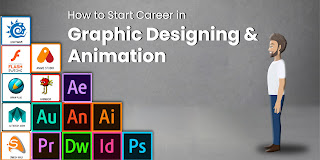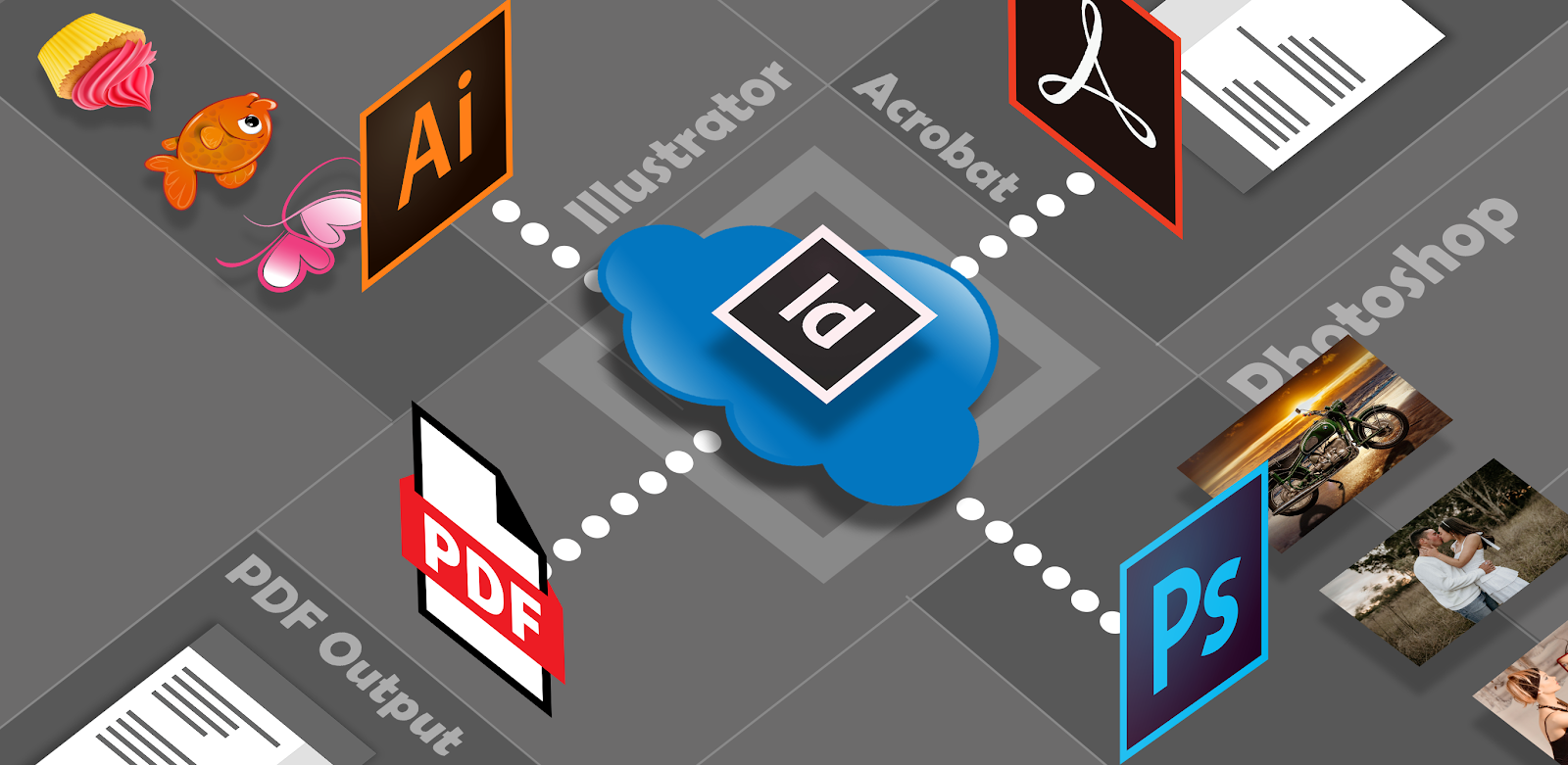How can you start a career in animation and graphic design?
How can I start a career in animation and graphic design?
Starting a career in animation and graphic design requires a combination of technical skills, creativity, and a solid understanding of design principles. Here are some steps you can take to start a career in these fields:
Develop your skills:
Build a strong foundation in graphic design and animation by taking courses or tutorials online, attending workshops, or pursuing a degree in a related field. Practice and develop your skills in software such as Adobe Photoshop, Illustrator, and After Effects.
Developing your skills is an important step to starting a career in animation and graphic design. Here are some ways to develop your skills:1. Take courses or tutorials: Enroll in courses or tutorials online or in-person to learn the technical skills required for animation and graphic design. Look for courses or tutorials that cover topics such as design principles, color theory, typography, and software such as Adobe Photoshop, Illustrator, and After Effects.
2. Practice: Practice your skills regularly by working on personal projects or creating design or animation exercises. This will help you build your skills and develop your style.
3. Get feedback: Share your work with others and get feedback from peers or professionals in the field. This can help you identify areas for improvement and develop your skills further.
4. Attend workshops: Attend workshops or conferences related to animation and graphic design to learn new skills, meet industry professionals, and stay up-to-date on the latest trends and techniques.
5. Pursue a degree: Consider pursuing a degree in animation or graphic design to gain a comprehensive education in the field. A degree can provide you with a broad range of skills and knowledge, as well as valuable networking opportunities.
6. Follow industry professionals: Follow and learn from industry professionals on social media, blogs, or websites. This can help you stay up-to-date on the latest trends and techniques and provide you with inspiration for your own work.
Developing your skills takes time and effort, but it is a crucial step to starting a successful career in animation and graphic design. By consistently practicing and seeking out new opportunities to learn, you can improve your skills and build a strong foundation for your career.
Build a portfolio
Showcase your work and skills by creating a portfolio that includes your best design and animation projects. A portfolio is a great way to demonstrate your skills to potential employers or clients.
Building a portfolio is an important step to starting a career in animation and graphic design. A portfolio is a collection of your best work that showcases your skills and creativity to potential employers or clients. Here are some tips for building a portfolio:
1. Choose your best work: Select your best work that showcases your skills and style. Your portfolio should include a variety of projects that demonstrate your range and abilities.
2. Organize your portfolio: Organize your portfolio in a way that is easy to navigate and showcases your work effectively. Consider grouping your work by project or by category.
3. Include a variety of projects: Include a variety of projects in your portfolio, such as logos, illustrations, animations, and graphic design projects. This will show your versatility and range as a designer.
4. Show your process: Include sketches, drafts, or process work to show how you arrived at the final product. This can demonstrate your design thinking and problem-solving skills.
5. Use high-quality images: Use high-quality images of your work that accurately represent the colors, textures, and details of the final product. This will showcase your attention to detail and professionalism.
6. Keep it updated: Keep your portfolio updated with your latest work and remove outdated work. This will show that you are active in the field and keep your portfolio fresh.
Your portfolio is your opportunity to showcase your skills and creativity to potential employers or clients. By organizing your work effectively and showcasing a variety of projects, you can build a strong portfolio that demonstrates your abilities as an animator or graphic designer.
Network
Attend events and meetups related to animation and graphic design to network with industry professionals and build connections. Join online communities and forums to connect with others in the field.
Networking is a crucial part of starting a career in animation and graphic design. Building connections with industry professionals can lead to job opportunities, mentorship, and valuable advice.
Here are some ways to network in these fields:
1. Attend industry events: Attend events such as conferences, meetups, or workshops related to animation and graphic design. This is an opportunity to meet other professionals in the field and build connections.
2. Join professional organizations: Join professional organizations such as the Animation Guild or the Graphic Artists Guild. This can provide you with access to industry resources and networking opportunities.
3. Volunteer: Volunteer for events or projects related to animation and graphic design. This can provide you with an opportunity to work with other professionals and build connections.
4. Connect on social media: Follow and engage with other professionals in the field on social media platforms such as LinkedIn, Twitter, or Instagram. This can help you build connections and stay up-to-date on industry news.
5. Attend portfolio reviews: Attend portfolio reviews to receive feedback on your work from industry professionals. This is an opportunity to network and receive valuable advice on your portfolio.
Networking takes time and effort, but it can lead to valuable connections and opportunities in animation and graphic design. By attending events, joining professional organizations, and building connections online, you can build a strong network and advance your career in these fields.
Gain work experience
Consider taking on freelance work or internships to gain experience and build your resume. This will give you an opportunity to work on real projects and build your skills.
Gaining work experience is a key step to starting a career in animation and graphic design.
Here are some ways to gain work experience:
1. Internships: Look for internships at animation or graphic design studios. This can provide you with valuable on-the-job experience and help you build connections in the industry.
2. Freelance work: Offer your services as a freelance animator or graphic designer. This can provide you with the opportunity to work on real-world projects and build your portfolio.
3. Personal projects: Work on personal projects to gain experience and build your skills. This can demonstrate your creativity and initiative to potential employers or clients.
4. Entry-level positions: Look for entry-level positions such as production assistant or junior designer. This can provide you with valuable experience working in a professional environment and help you build connections in the industry.
5. Collaborate: Collaborate with other animators or designers on projects to gain experience working in a team and build your network.
Gaining work experience takes time and effort, but it is an important step to starting a career in animation and graphic design. By pursuing internships, freelance work, or entry-level positions, you can gain valuable experience, build your skills, and make connections in the industry.
Stay up-to-date
Stay current with the latest design and animation trends, techniques, and software. Attend workshops, take courses, and read industry blogs to stay informed and keep your skills sharp.
Staying up-to-date with the latest trends, technologies, and techniques is essential for success in animation and graphic design.
Here are some ways to stay current:
1. Attend conferences and workshops: Attend industry events such as conferences and workshops to learn about new trends and technologies. This is an opportunity to learn from experts in the field and meet other professionals.
2. Read industry publications: Read industry publications such as Animation Magazine, 3D World, and Computer Arts to stay up-to-date on news, trends, and techniques.
3. Follow blogs and podcasts: Follow industry blogs and podcasts such as Motionographer, Motion Design School, and The Future to learn about new techniques and trends.
4. Take online courses: Take online courses from websites such as Lynda.com or Udemy to learn new skills or techniques.
5. Experiment with new tools: Experiment with new software or tools such as Adobe Creative Cloud, Toon Boom, or Blender to stay current with the latest technology.
By staying up-to-date with the latest trends, technologies, and techniques, you can remain competitive and advance your career in animation and graphic design. Continuously learning and experimenting with new tools and techniques can also help you stay creative and innovative in your work.
Apply for jobs
Once you have a solid portfolio and some work experience, start applying for jobs in the field. Look for job opportunities on job boards, company websites, or social media platforms.
Once you have developed your skills, built a portfolio, networked, gained work experience, and stayed up-to-date with the latest trends and technologies, it's time to start applying for jobs in animation and graphic design.
Here are some tips for applying for jobs:
1. Research companies: Research companies in the animation and graphic design industries that interest you. Learn about their work, culture, and values to determine if they are a good fit for you.
2. Tailor your application: Tailor your application, including your resume, cover letter, and portfolio, to the specific company and job you are applying for. Make sure your application highlights your relevant skills and experience.
3. Apply for internships: Apply for internships to gain experience and build connections in the industry. This can lead to full-time job opportunities.
4. Prepare for interviews: Prepare for interviews by researching the company, practicing common interview questions, and preparing questions to ask the interviewer.
5. Follow up: Follow up with the company after applying or interviewing to show your continued interest in the position.
Applying for jobs in animation and graphic design can be competitive, but by researching companies, tailoring your application, preparing for interviews, and following up, you can increase your chances of landing a job in the field.
Starting a career in animation and graphic design requires dedication, hard work, and a passion for the craft. With time and effort, you can develop your skills and build a successful career in these fields.



Comments
Post a Comment